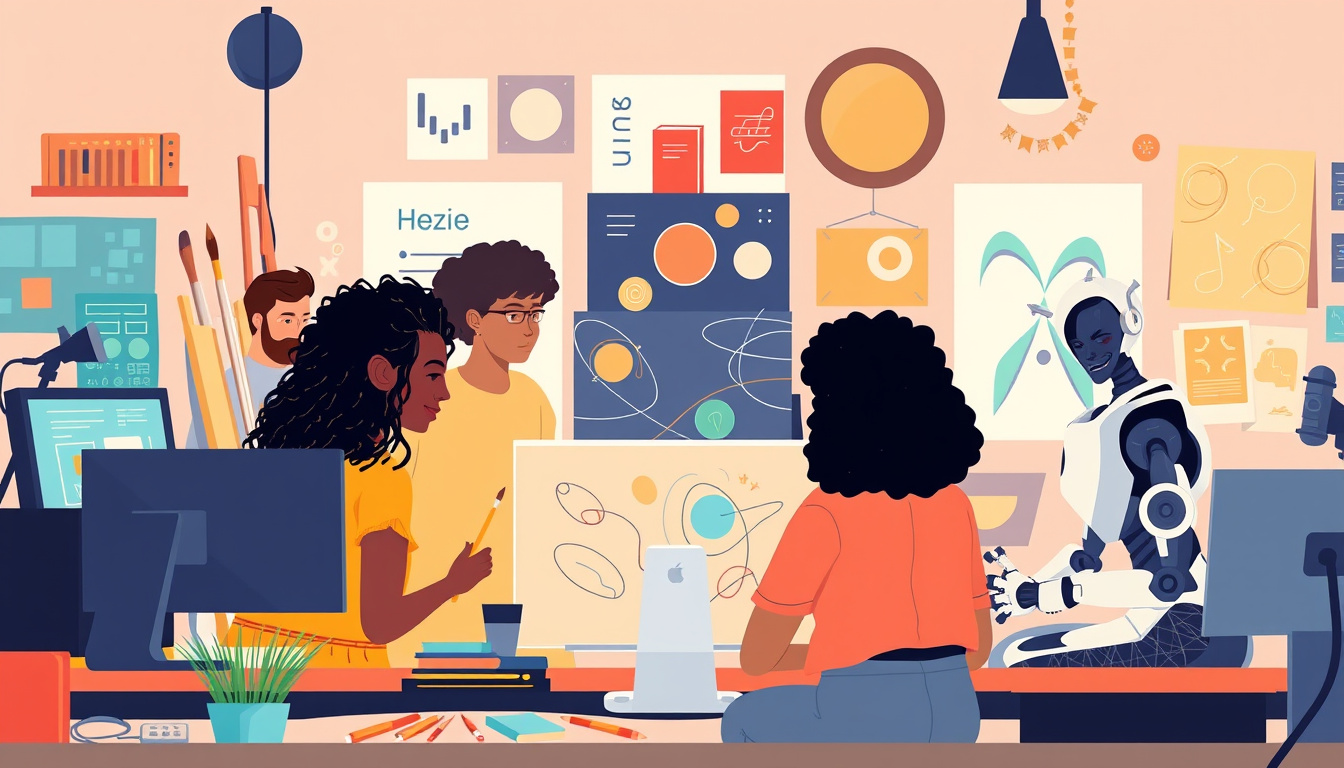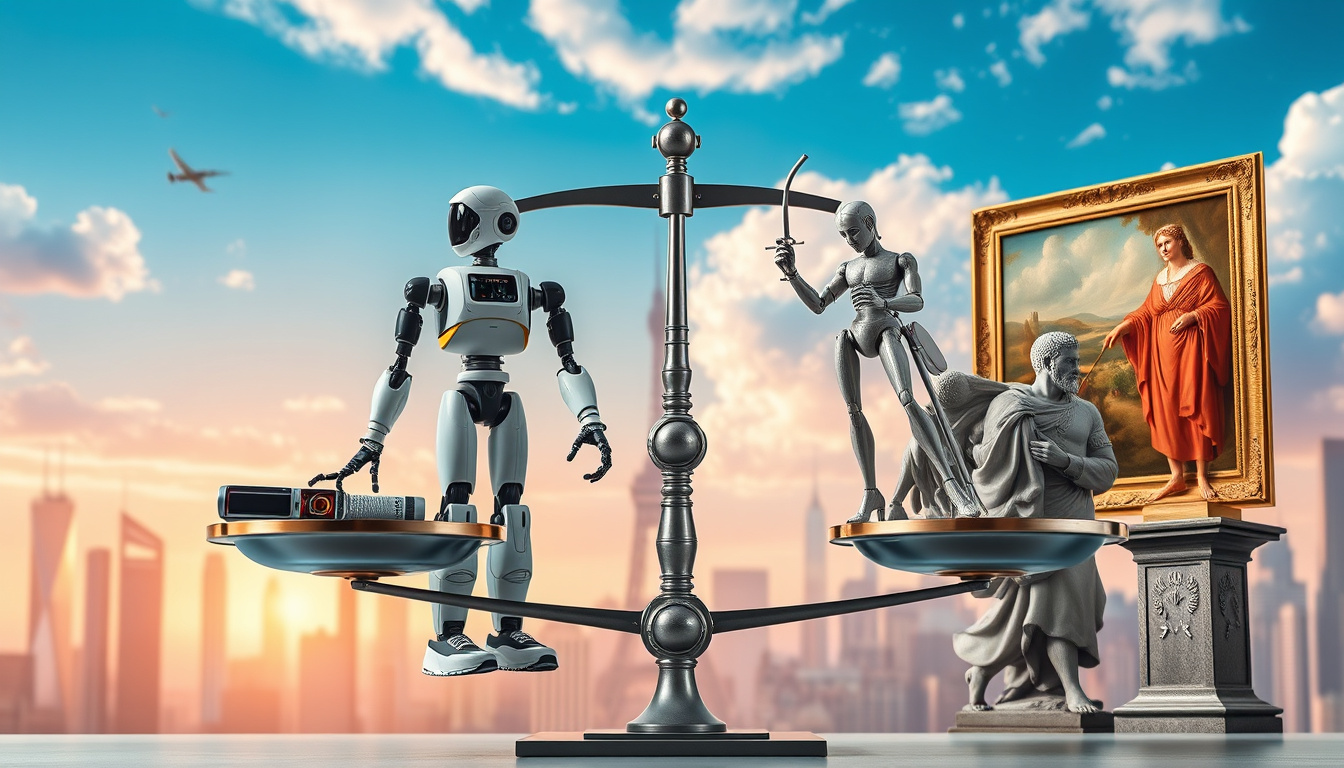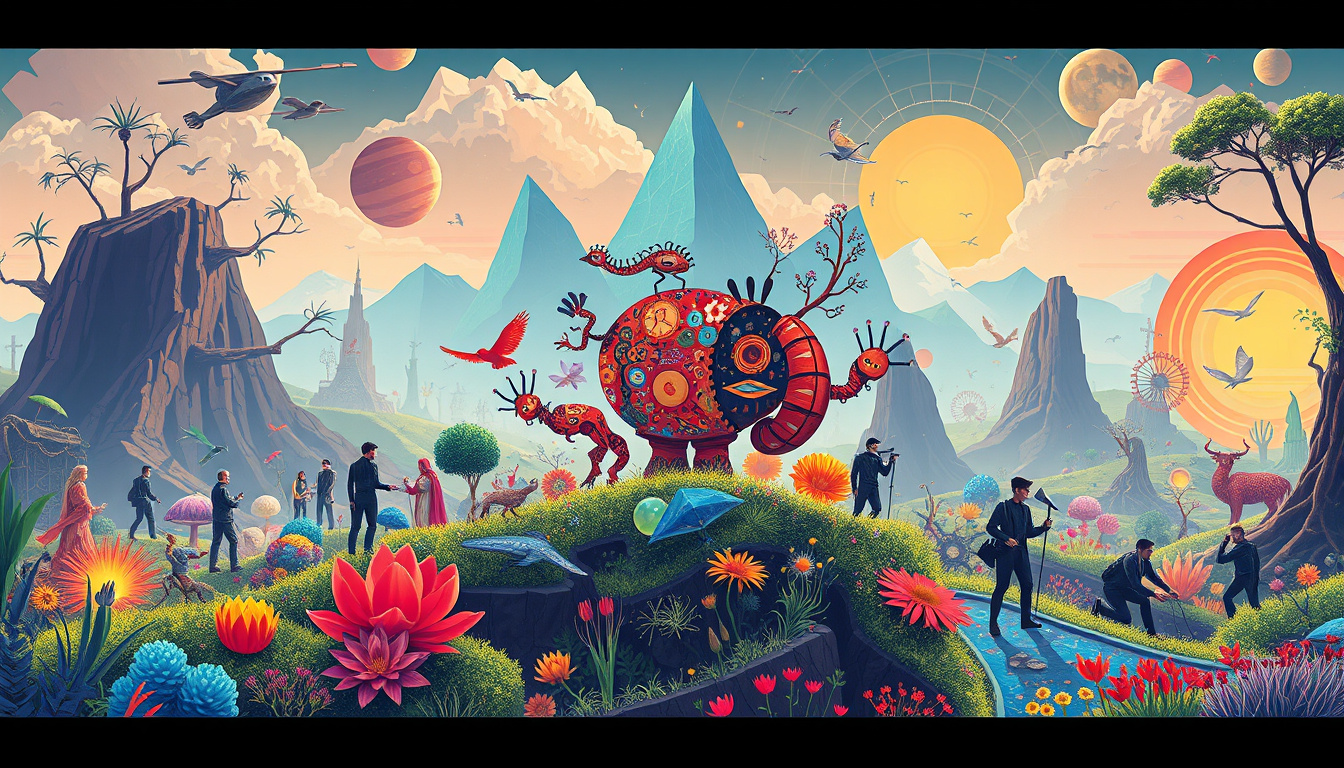In recent years, the world of creativity has transformed significantly with the advent of artificial intelligence (AI).
The Ethical Use of AI in Creative Fields: Best Practices has become an essential topic for artists, designers, and content creators alike.
As AI tools increasingly permeate artistic processes, it’s imperative to navigate the complexities of ethics, originality, and intellectual property.
In this article, we will explore best practices for merging AI technology with creative endeavors, ensuring that innovation does not compromise ethical standards in the arts.

The Main Points:
- AI can enhance creativity but must be used responsibly.
- Proper attribution and credit are essential when using AI-generated content.
- Striking a balance between innovation and originality is crucial in creative fields.
- Understanding copyright and intellectual property laws is vital for ethical AI use.
- Future developments in AI should prioritize ethical considerations to support creative professionals.
Understanding AI in Creative Industries
In recent years, the ethical use of AI in creative fields has become a crucial topic of discussion among artists, designers, and industry professionals alike.
As technology rapidly advances, many creatives are exploring how artificial intelligence can enhance their work while ensuring they adhere to best practices.
One primary concern is the potential for AI to replicate or appropriate human creativity, which raises questions about ownership, copyright, and the authenticity of artistic expression.
To navigate these complexities, it is essential for professionals in the creative industries to establish clear guidelines for the ethical use of AI.
These best practices can include transparent acknowledgment of AI’s role in the creative process, fostering collaboration between human creators and AI systems, and prioritizing the integrity of original works.
By understanding and implementing these principles, creatives can leverage AI’s capabilities to inspire innovation while maintaining respect for the artistry at the heart of their fields.
The Importance of Attribution and Credit
In today’s digital landscape, where AI-generated content is becoming increasingly prevalent, understanding the ethical use of AI in creative fields is essential.
Attribution and credit play a pivotal role in ensuring that creators are recognized for their original work, whether it is produced by a human or an AI system.
Failing to acknowledge the contributions of these human creators can lead to ethical dilemmas, especially when AI tools are used to generate art, music, or writing.
Best practices dictate that creators should always provide clear sourcing and credit when utilizing AI-generated content and tools, highlighting the synergy between human creativity and technological advancements.
This not only respects the original creators’ rights but also fosters an environment of innovation and collaboration in the creative industries.
By adhering to these principles, individuals and organizations can promote the responsible use of AI, ensuring that both human and AI contributions are valued equally.
‘Technology is only as ethical as the people who use it.’ – John P. Kotter

Balancing Innovation and Originality
In the ever-evolving landscape of creative industries, professionals are increasingly exploring the ethical use of AI in creative fields: best practices emerge as crucial guidelines for ensuring that innovation does not come at the cost of originality.
As AI tools become more sophisticated, they can aid in generating ideas, enhancing content, and automating processes.
However, it is essential to strike a balance between leveraging these technologies and preserving the unique voice and creativity of individual artists.
Best practices for ethical AI use include transparency in disclosing AI-generated content, respecting copyright and intellectual property rights, and fostering collaboration between human creativity and machine learning.
By adhering to these principles, creators can harness the power of AI while maintaining the integrity and authenticity of their work, ensuring that innovation and originality coexist harmoniously in the creative realm.
Navigating Copyright and Intellectual Property Issues
Navigating copyright and intellectual property issues is crucial in today’s landscape, especially with the rise of AI in creative fields.
As artists, writers, and musicians increasingly integrate technology into their work, understanding the ethical use of AI becomes paramount.
Best practices for the ethical use of AI in creative industries include respecting existing copyrights by not using protected materials without permission, ensuring transparency about AI’s role in the creative process, and actively involving human creativity in the final outputs.
By fostering a collaborative environment where AI serves as a tool rather than a replacement, creators can produce innovative work while upholding ethical standards.
This not only helps protect their intellectual property but also paves the way for a respectful dialogue about the future of creativity in the age of artificial intelligence.

Future Considerations for Ethical AI Use in Creativity
As we navigate the evolving landscape of creative industries, the ethical use of AI in creative fields will be central to ensuring a fair and responsible integration of technology into artistry.
Organizations and creators alike must identify and implement best practices that prioritize transparency, accountability, and respect for intellectual property rights.
Adopting guidelines that foster collaboration between human creativity and AI capabilities can lead to innovative outcomes while safeguarding originality and authenticity.
Educators, industry leaders, and policymakers should collaborate to establish frameworks that promote inclusivity and diversity in AI-generated content while ensuring that the human element remains front and center in creativity.
Thus, ongoing discussions about the ethical use of AI in creative fields not only shape the future of artistry but also ignite a necessary dialogue about the role of technology in our lives.
Common questions:
What are the best practices for using AI in creative fields?
Best practices include ensuring proper attribution and credit for AI-generated content, balancing the use of AI with human creativity, and navigating copyright and intellectual property issues carefully.
How should attribution and credit be handled when using AI in creative projects?
Attribution and credit should be clear and transparent, indicating both the role of AI and the human contributors involved in the creative process, to acknowledge all parties accurately.
Can AI-generated work be considered original?
AI-generated work can raise questions about originality.
It’s important to ensure that the AI’s outputs are used as tools to enhance human creativity rather than replace it, promoting a balance between innovation and originality.
What are the copyright implications of using AI-generated content?
Copyright implications can vary by jurisdiction, but it is crucial to understand that AI-generated content may not be automatically protected by copyright laws; users should be aware of the source data and its usage rights.
What future considerations should be made for ethical AI use in creativity?
Future considerations should focus on evolving ethical guidelines, fostering transparency in AI processes, and ensuring that AI complements rather than supplants human creativity, while also addressing societal impacts and biases.
—————————————————-
Are you tired of the 9-to-5 grind? Unlock the secrets to online income generation. GetIncomeNow.com is your roadmap to financial freedom. We reveal proven methods, insider tips, and cutting-edge strategies to help you achieve your income goals. Start your journey to financial independence today!
